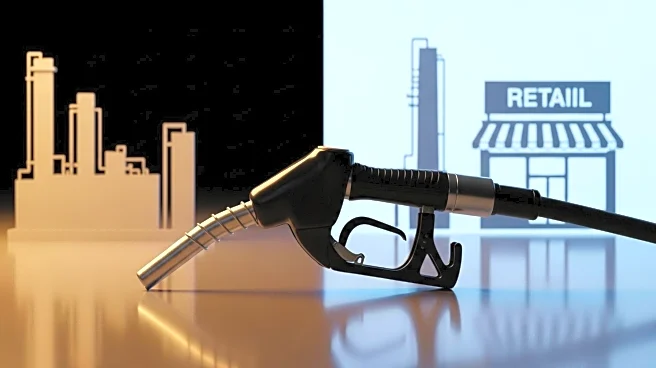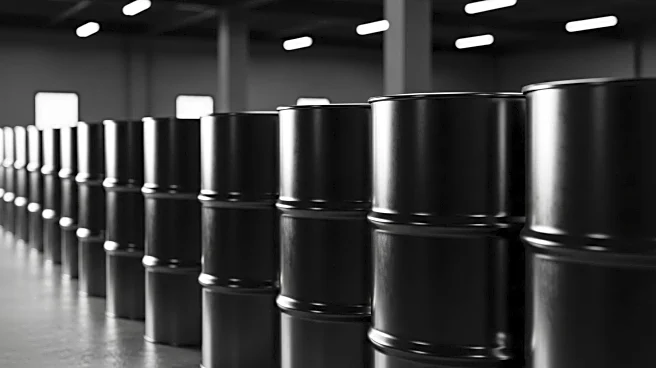What's Happening?
The U.S. average retail gasoline price has seen a slight decline, dropping 1.9 cents per gallon to $3.27, according to the latest Lundberg Survey. Despite this, rising crude oil prices, driven by geopolitical tensions involving Russia, suggest potential increases at the pump. West Texas Intermediate crude has risen by $3.43 per barrel, reaching $65.72, impacting gasoline prices. Refiners are experiencing margin losses due to higher oil prices, while retailers have gained a 12.6 cents per gallon margin improvement. The situation may lead to gasoline price increases if crude oil prices remain high.
Why It's Important?
The fluctuation in gasoline prices has significant implications for the U.S. economy, affecting consumers, retailers, and refiners. Rising oil prices can lead to higher gasoline costs, impacting consumer spending and transportation expenses. Retailers benefit from increased margins, potentially offsetting losses from declining sales. However, refiners face challenges as their margins shrink, affecting profitability. The situation highlights the complex dynamics of the fuel market, influenced by global geopolitical events and domestic demand trends.
What's Next?
If crude oil prices continue to rise, gasoline prices may increase, reversing the current year-on-year discount. Retailers may adjust pump prices to remain competitive, potentially passing some margin gains to consumers. The ongoing geopolitical tensions and sanctions on Russia will likely influence oil price trends, impacting the fuel market. Stakeholders, including policymakers and industry leaders, will need to navigate these challenges, balancing economic growth with consumer affordability.
Beyond the Headlines
The current situation in the fuel market underscores the broader economic and geopolitical factors influencing energy prices. The impact of international sanctions and geopolitical conflicts on oil prices highlights the interconnectedness of global markets. Additionally, the dynamics between refiners and retailers reflect the competitive nature of the fuel industry, with implications for pricing strategies and market stability. These factors contribute to the ongoing debate on energy policy and economic resilience.










